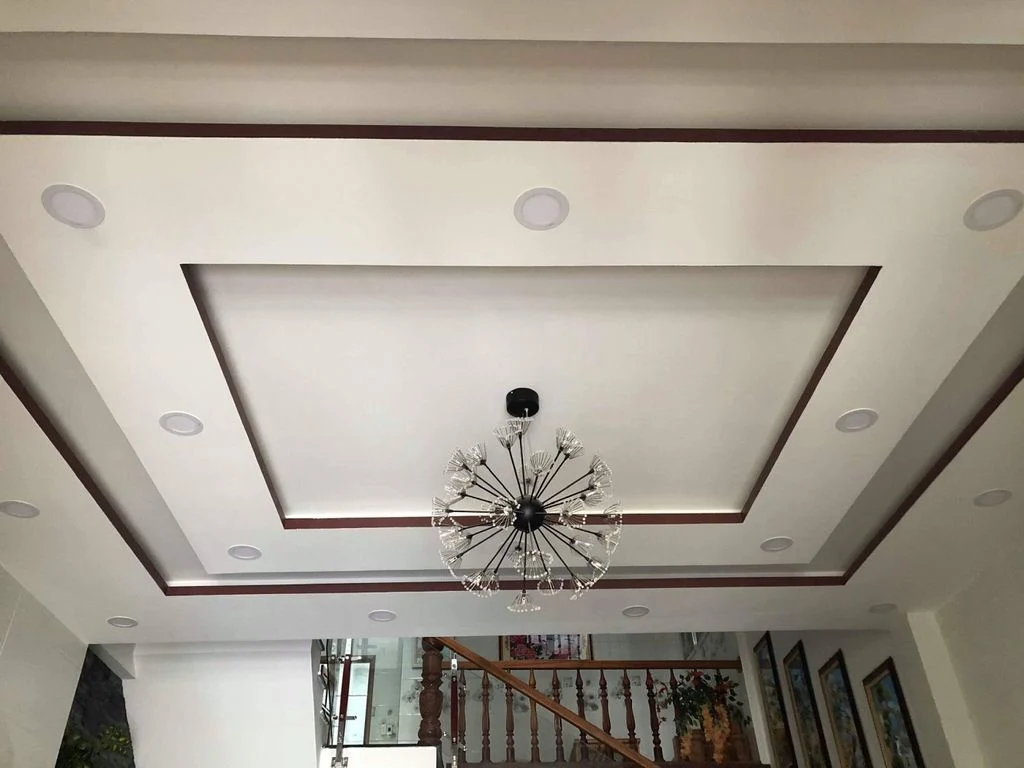
Why are more people opting for alternatives to plaster ceilings?
1. Complex Installation Process
Installing a plaster ceiling involves a complex process. It requires a steel or wooden frame, with panels and plasterboards fixed using a nail gun. The final steps include plastering and priming. This process is not only intricate but also carries risks. Improper installation can lead to sagging or deformation. Additionally, it is a time-consuming process, typically taking at least two weeks or longer.

2. Prone to Cracking
One of the major drawbacks of plaster ceilings is their susceptibility to cracking, which can lead to sagging or ceiling collapse. This issue may arise due to various reasons, such as improper design, use of incompatible materials, or incorrect installation techniques.
Additionally, fluctuations in temperature and humidity levels in the roof space can contribute to ceiling cracks. If the plaster ceiling is installed too close to the roof or without adequate heat protection, the expansion and contraction of materials due to temperature changes can result in cracks.
Other external factors, such as water leakage, hanging heavy decorations, or impact damage, can also directly affect the plaster ceiling and cause cracks.

3. Susceptible to Water Damage and Mold
The biggest disadvantage of plaster ceilings is their vulnerability to water damage. According to experts, plaster absorbs water readily. If exposed to moisture and not addressed promptly, the plaster will deteriorate, leading to discoloration, black mold, or even complete ceiling failure.
This issue is particularly critical in southern regions with high rainfall, as it increases the humidity in the air. Water can accumulate on the ceiling surface and gradually penetrate the material, resulting in mold and mildew.

4. High Installation and Maintenance Costs
Plaster ceiling installation costs tend to be high due to the complex installation process, especially for intricate designs. When a plaster ceiling becomes deformed, cracked, or moldy, timely repairs are necessary to prevent further deterioration.
However, the repair process typically involves removing and replacing ceiling materials, generating waste and dust. This can be challenging if the space is already occupied. Additionally, repair costs can be significant and involve multiple steps, including removal, transportation, installation of new panels, plastering, and repainting.

Modern Alternatives to Plaster Ceilings
There are several alternatives to plaster ceilings that offer improved aesthetics, durability, and functionality, such as enhanced acoustic and thermal performance or reduced weight. Here are some options to consider:
1. Aluminum Ceiling (Aluminum Panel Ceiling)

Aluminum ceilings utilize lightweight, durable, and long-lasting aluminum panels. Installation is relatively simple and quick, requiring less effort. Aluminum ceilings are also moisture-resistant, easy to clean, and less prone to dust accumulation. This makes them ideal for spaces that require high fire resistance and moisture control, such as bathrooms and kitchens.
However, aluminum ceilings often have an industrial appearance that may not suit elegant or classic design styles.
2. Stretch Fabric Ceiling

Stretch fabric ceilings use a special fabric stretched over a metal frame. They offer design flexibility, allowing for unique, modern designs with various colors and shapes. Stretch fabric ceilings provide excellent acoustic and thermal performance, helping regulate temperature and noise levels in a space.
Additionally, they are moisture-resistant and easy to clean, with a smooth surface that repels dust. However, the fabric can be susceptible to damage if not properly maintained, especially in environments with high temperatures and humidity. Neglecting regular cleaning can also lead to odor issues and aesthetic deterioration.
3. Wooden Ceiling or Composite Materials

Natural wood, engineered wood, or composite materials (wood + plastic) are also popular alternatives to plaster ceilings. These options offer high aesthetic value and create a warm and elegant ambiance in living spaces.
Wood and composite ceilings are known for their durability and strength. Composite materials, in particular, are resistant to termites and are less affected by environmental factors. Natural wood also provides decent acoustic performance, contributing to a quieter indoor environment.
However, these ceilings require meticulous maintenance due to the risk of termite infestation, mold, and moisture damage, especially in humid environments. Wood can also scratch, lose color over time, and require periodic refinishing to maintain its beauty.
4. Exposed Concrete Ceiling

A popular trend in modern design is to leave the concrete ceiling exposed, foregoing the traditional plaster finish. Exposed concrete ceilings exude a bold, industrial style that suits contemporary and characterful spaces.
Concrete ceilings are incredibly strong, durable, and resistant to damage. By eliminating the need for a plaster ceiling or other finishing materials, exposed concrete ceilings can also reduce installation costs.
However, a drawback of exposed concrete ceilings is the exposure of electrical wiring, plumbing, and HVAC systems, which can be unsightly and make future repairs more challenging. Additionally, concrete surfaces can accumulate dust and dirt, requiring proper maintenance to keep them clean.






























